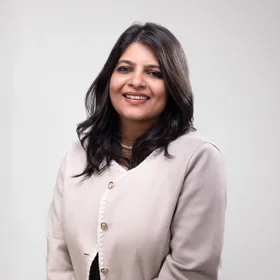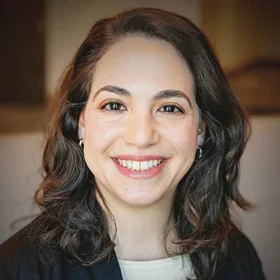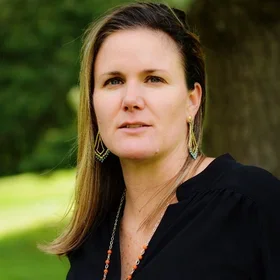When Britani Griffin graduated from University of Virginia in 2009, she initially thought she would go to law school. But with the country in a deep recession, she ultimately decided on Columbia University’s M.S. in Fundraising Management (now renamed as Nonprofit Management). “I wanted to find a career where I could make a living and make a difference in the world,” she recalled.
Griffin is now Associate Development Director for Be the Match, which facilitates bone marrow transplants to treat individuals with life-threatening blood diseases and cancers. She is also an Associate Instructor for the Nonprofit Management program’s Fundraising Fundamentals for Nonprofits course. We spoke with her recently about her career journey, the enduring value of the Nonprofit Management program and the rewards of seeing the impact of her work.
How did you find your way into the nonprofit world and the program at Columbia?
I was volunteering at the Carver Center, a nonprofit community center in my hometown of Port Chester, NY, when the development director noticed my work ethic and started giving me more responsibilities, leading to a paid position. After two years there, I started looking for positions at organizations that had tuition benefits because I realized I wanted to go back to school. That led to a job at Columbia’s Office of Alumni Development and Faculty Foundation Relations program.
I was looking at other top graduate programs in fundraising, but I liked the spectrum of academic elements in Columbia’s program—studying the various components of fundraising for annual giving, major gifts and planned giving; the administrative functions like understanding nonprofit finance, human resources, operations; and how they all connect.
Tell me about your experience in the program. What made the biggest impact on you?
The instructors and lecturers were phenomenal. The program is truly grounded in the scholar-practitioner model, so in class they presented us with real-world scenarios, such as what to expect when we’re working with donors or a board of directors. And they shared their experiences of how they landed in their careers.
Our professors encouraged us to take advantage of the connections with our peers in the program, and I’ve definitely done that. I had a very tight cohort, and I think that was the experience for other cohorts, as well. I know some that still take an annual trip to Fire Island or meet regularly for happy hour. Everyone is willing to help each other advance.
The capstone project was a great opportunity to apply our new knowledge to help an organization advance their mission. My project was working with the Rye Arts Center on how to revamp their operations and how they can most effectively use the funds they raise.
Where did you land after graduating?
In January 2019, I joined Be the Match. I get to apply everything I’ve learned in my career up to this point because we’re really focused on building the major gift program by working with different benefactors: learning more about their connection to the project, building stronger relationships with them and helping them make transformative gifts to advance our mission.
I remember a lot of my favorite professors in the program raved about how much they enjoyed working for healthcare causes, and I see why they loved it so much. Just the direct impact of it—being able to meet patients who’ve received a transplant, seeing the faith and resolve of their families. This is why we do the work that we do.
How has the upheaval over the past six months impacted your work, as well as the broader nonprofit world?
I’m not able to hit the road and meet with benefactors in person, so things have certainly been different in the last six months. It’s hard on phone calls and Zoom to connect with people the way you can in person where you can see what makes their eyes sparkle and what really moves them.
Both the pandemic and the social unrest have shined a light on the work that nonprofits are doing. One of our strategic initiatives at Be the Match in the last couple of years has been eliminating the disparities in healthcare. Of the 22 million potential bone marrow donors on the Be the Match Registry, only 4% are Black or African American, which means the chance of finding a match if you're Black is 23%. If you're White, you have a 77% chance of finding a match. So, we recognize that the disparities and differences are not just in terms of police brutality and housing discrimination. It’s also something that exists in healthcare, and we need to improve access to healthcare for all people.
There are so many needs to be filled during this time, and it’s forcing many nonprofits to shift their models, programs and services. How does an afterschool program work with so many school districts operating remotely? How can you ensure that families have a working internet connection in the home? How do you do work with senior citizens and other vulnerable populations that still need physical interaction? There’s opportunity to be entrepreneurial with these challenges—launching a virtual book club for seniors or renting out a space for children to do remote learning while still maintaining social distance when their parents are working.
The great thing about the nonprofit space that I’ve learned is that it’s a really amazing way to make a difference in your part of the world. I may not be the person who is necessarily going to bring world peace or develop the cure for cancer or HIV, but I’m helping ensure that families have access to a lifesaving treatment for their blood diseases and cancers. It’s my way of being able to make a difference, whether it’s for just one person or thousands of people.
Learn more about the M.S. in Nonprofit Management program.


